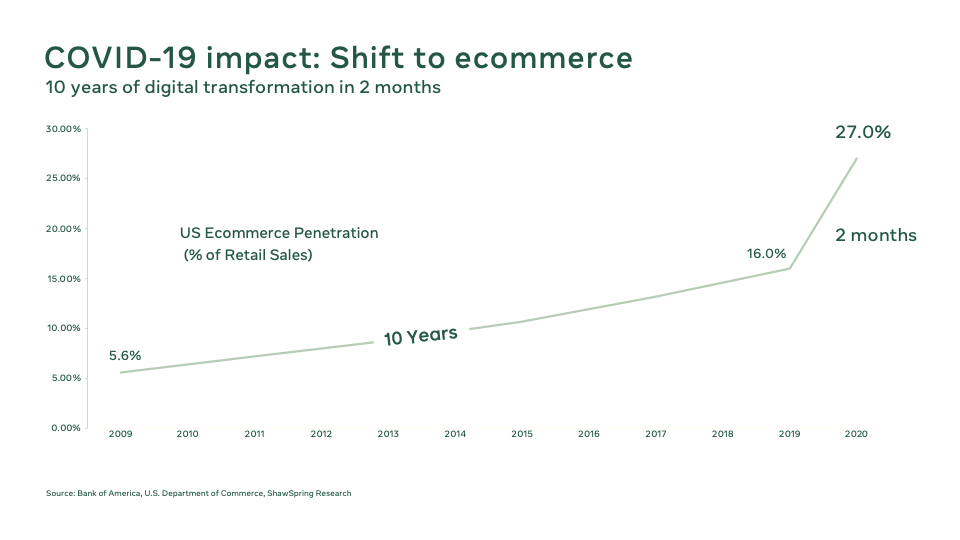
Amazon is changing the holiday shopping game this year. Traditionally a summer happening, Prime Day has been pushed back to October. In the midst of Covid-19, Amazon was overwhelmed with orders for essentials like toilet paper and soap; their namesake mega sale consequently landed on the back burner – until now.
Consumer spending is trending upward, but shoppers are still staying home. It’s too soon to say what long term effects the pandemic will have on retail, but the fact of the moment is that e-commerce is booming.

Q4 is going to look a lot different in 2020 than it has in years past, paving the way for the most competitive DTC environment we’ve ever seen. Amazon extending the holiday shopping season is a big factor in the changing landscape, but it’s not the only retailer making waves.
Through this post, you’ll understand why a Prime Day strategy is essential if you’re an Amazon brand, and what to know for this Q4 if you’re not.
The Ghosts of Prime Day Past and Present
Prime Day has evolved since its debut five years ago as a one-day sale; it’s even grown exponentially since that weird fiasco with the (cute) dog pictures in 2018.
Now, it’s a 2-day mega sale event that generated over $7 billion in revenue in 2019. That’s up 71% from the $4.19 billion sold during the 36-hour sales event the year prior. It’s so big that some brands go as far as creating their own exclusive Prime Day products.
This extraordinary traffic coincides with advertising revenue, and quarter over quarter growth has exploded over the years.
Am I Just Shopping Because I’m Bored?
Amazon isn’t the only one whose plans were interrupted by Covid-19. Home Depot announced last week that they are making their own Black Friday rules. In a move it hopes will prevent crowding, the home improvement retailer will extend its Black Friday prices – in-store and online – throughout the entire months of November and December.
Other big names like Best Buy, Walmart, and Target will keep doors closed this Thanksgiving for the first time in decades and offer sales online earlier than usual.
History has shown us that the halo effect is real. According to a key data group, competing brands also benefitted from Prime Day in 2019. Retailers that generated annual revenue of at least a billion dollars saw a 64% increase in online sales on day one of Prime Day compared to an average Monday.
Add holiday shopping, social distancing restrictions, and a 2-month Black Friday into the mix, and you get the perfect e-comm storm. This surplus of opportunity to score the best deal will have consumers in the mood to shop, and it’s in DTC’s best interest to respond with sales of their own.

Maybe Christmas (he thought) doesn’t come from a store
Maybe it comes in the mail. With 74% of U.S. consumers saying they will shop online for the holidays, this moment for DTC brands is unprecedented.
Whether you’re looking to drive traffic to your site or up your visibility on Amazon for Prime Day, MuteSix can help navigate this saturated holiday sale season. We are experts at creating holistic e-commerce ad strategies across all channels and can help break through the noise to capitalize on the increased buying behavior.
At least for now, trips to the mall and those photo opps with Santa are a thing of the past. 2020 is the year of e-commerce, and it’s not too late to reach out for some expert support in Q4. Get in touch with us through our website before the holiday madness truly begins.